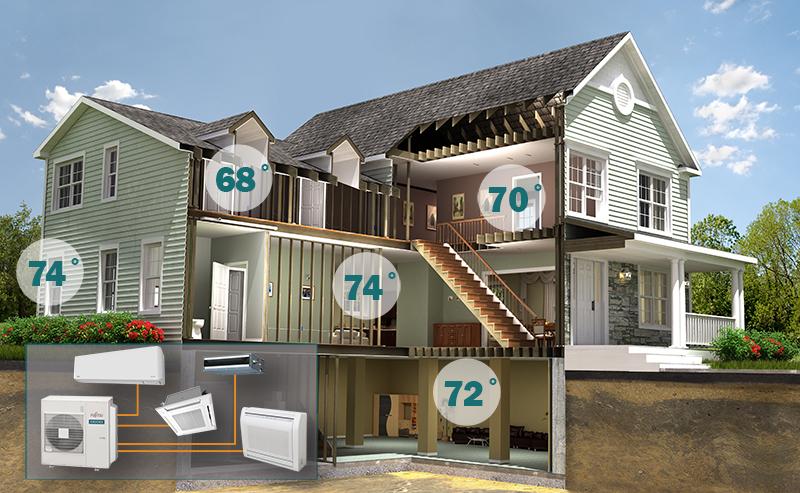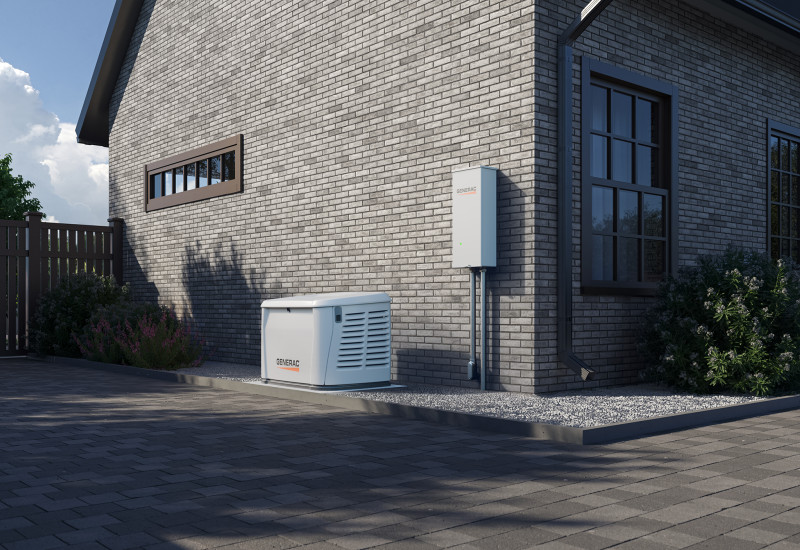Keeping Cool and Energy-efficient Amid America’s “Extra Room Boom” This Summer
(NewsUSA) - Today’s homeowners are having an Extra Room Boom! This latest real estate reality is marked by the convergence of two mounting trends – growing home sizes and declining household members – that together mean more extra space and energy-efficiency challenges.
- Today’s homeowners are having an Extra Room Boom! This latest real estate reality is marked by the convergence of two mounting trends – growing home sizes and declining household members – that together mean more extra space and energy-efficiency challenges.
Americans want their homes supersized. In fact, median home sizes have increased by a whopping 150% in just over 40 years with the median size of a new home jumping from 1,595 square feet in 1980 to 2,383 in 2022.
Simultaneously, the number of household occupants is steadily shrinking. For example, the average population per household has decreased by more than 100% dropping from 2.75 people in 1980 to 2.57 members in 2022.
This emerging dynamic demands a smart energy-efficiency strategy that effectively regulates cooling power between used and unused rooms. The good news is that homeowners can prevent a utility bill blitz by following a few simple tips. With home heating and cooling accounting for more than half (54%) of home energy use, small steps can go a long way.
- Leverage the 2022 Inflation Reduction Act:The 2022 Inflation Reduction Act is a landmark legislation that encourages Americans to transition towards a new era of energy efficiency and decarbonization. It offers households tax credits for related improvements that save money in the long run, such as highly efficient heating and cooling appliances like heat pumps. Households can claim a tax credit for 30% of the costs of buying and installing a heat pump, up to $2,000 including support for any electric system upgrades needed to make the home heat-pump-ready. ‘
- Ease Into Electric: According to Columbia University’s Earth Institute, electric systems are a solution to decarbonize home climate control. Among the most energy-efficient heating and cooling products, electricity-powered ductless mini-split systems, offered by companies including Fujitsu General America, can save as much as 25% on energy bills. Mini-splits use thin copper tubing to pump refrigerant from an outdoor compressor directly into an indoor air-handling unit, where the air is quietly distributed to the interior space.
- Find Your Efficient Comfort Zone: Prioritize your rooms. If you find yourself using a fraction of your home, consider upgrading to a zoned ducted, or ductless system, allowing you to save energy heating and cooling spaces where you don’t spend much time. You’ll multiply savings by needing less cooling and gaining a more efficient system in the spaces you use.
- Get “Smart" About Climate Control: When it comes to home temperature control, there are Smart HVAC Systems and Smart Thermostats. Smart HVAC systems have built-in Internet capability and can be controlled directly without additional equipment. Smart Home Thermostats create “smart” systems by enabling remote temperature control via a mobile or Internet-connected device or voice-operated home automation system.
- Voice Your Preference: Most HVAC manufacturers offer apps that enable systems to be controlled from anywhere using a mobile device. Voice-control capability uses digital assistants, like Amazon Alexa or Google Home, to verbally dictate home temperatures. Easily controlling the temperature allows homeowners to be more comfortable and improve energy savings.
- Try Low-tech Fixes: Try to use heat-producing appliances – stoves, irons and dryers – at night or early morning. Switch to LED light bulbs instead of incandescent bulbs – which consume 90% more power. Seal air leaks around windows, doors, and places where pipes and wires come through walls. Check existing caulking and weather-stripping for gaps or cracks.
Targeted, room-by-room climate control systems will allow families to enjoy their extra space without paying to cool empty space this summer. To learn more or find a contractor nearby, visit www.constantcomfort.com.






